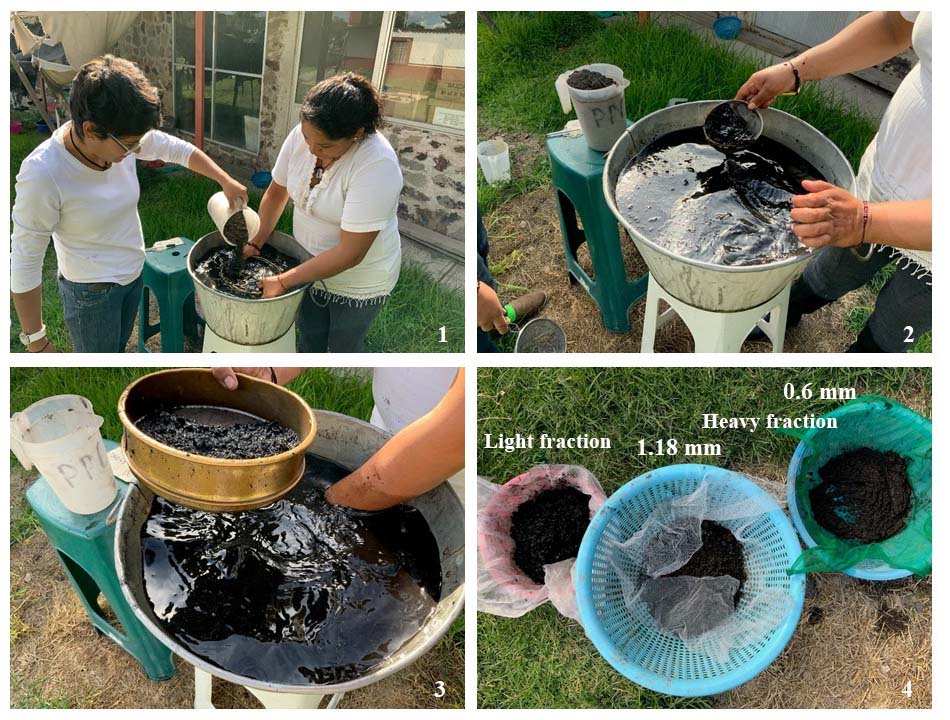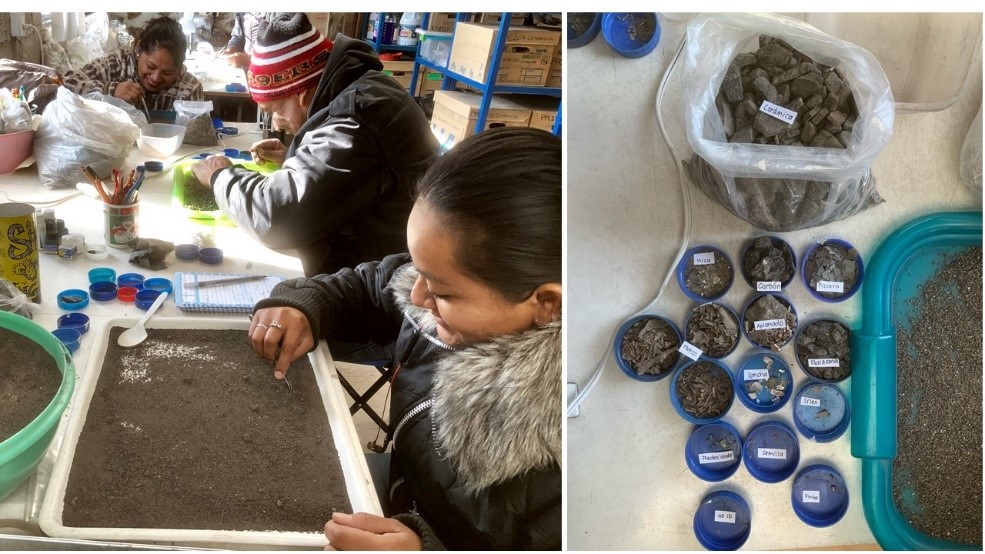Flotation
Analytical science: straight from the ground and to the laboratory
Soil samples saved from the field are analyzed in the laboratory in order to recover plant and seed remains. The procedure for separating those tiny organic remains from the soil is called “flotation,” that is, where dried soil is gently sieved through a wire mesh with the help of some water. With this method, organic vegetable remains (including ancient ones that are usually carbonized or charred) float up to the water’s surface (light fraction) while the remaining material sinks to the bottom of the container (heavy fraction).

While the light fraction is analyzed by the paleoethnobotanist to identify the remains of ancient plants and seeds, the heavy fraction is analyzed by trained technicians who recover assorted tiny fragments of ceramic, obsidian, flint, slate, green stone, pyrite, mica, pigment, bone, shell, eggshell, among others. Each type of material is then placed in its own labeled bag with its data recorded.

Although material recovered from the heavy fraction may appear less significant, the study of bone, for example, offer a different picture with the introduction and identification of several animal species, some even needing the help of a microscope. Due to their size, these tiny bones would have otherwise been impossible to find during excavation. Such is the case with the discovery of sea urchin, fish, reptiles, ducks and small birds like hummingbirds and quail. Fauna diversity like these have been very revealing for the study of animals that were used and consumed by the ancient inhabitants of Teotihuacan.